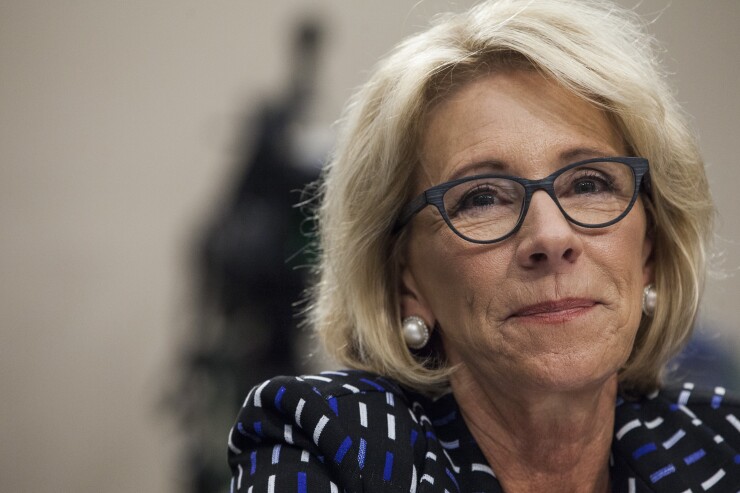Changes under consideration in federal student lending policy could create huge opportunities for private student lenders.
Ken Ruggiero, chairman and chief executive of Goal Structured Solutions, thinks that introducing a cap on Grad Plus Loans – a much-discussed reform - could allow private lenders to underwrite another $4 billion.
“Go back 10 years ago, Grad Plus loans did not exist,” Ruggiero said at a panel at the ABS East conference Tuesday. Now, “it’s possible to borrow up the full cost of attending. What if there were some caps? We think it would open up another $4 billion of demand – just for graduate students.”
Introducing some kind of means testing for Parent Plus loans could open up another $4 billion of opportunity, though he suggested private lenders might not want to make some of the loans that the federal government is making under this program. “If you make $15,000 a year and you need $30,000 to send your child to school, you can get loan, and the lender [the government] knows it’s never going to get paid back.”

There are two kinds of private student lending: In-school lending, which is dominated by banks (Sallie Mae is the market leader, followed by Wells Fargo and Discover), and refinance lending, which was pioneered by marketplace lenders such as Social Finance and CommonBond.
David Klein, chief executive of CommonBond, and Erica Dorfman, vice president for capital markets at SoFi, two other panelists, both feel that any cutbacks in eligibility for federally guaranteed student loans would likely result in greater underwriting of existing student loan products, rather than the introduction of new products.
Private student lenders have more to cheer about than a potential increase in demand for their products. Klein described the Department of Education’s decision to stop reporting certain data to the Consumer Financial Protection Bureau as “defanging a regulatory body,” saying it was just one example of the more business friendly environment under the Trump administration.
Klein also pointed to a bill in Congress that would expand tuition reimbursement assistance, which currently allows employers to pay up to $5,250 of the cost of an employee going back to school, tax free. This would be extended to pay for education costs.
The panel also discussed trends in borrower behavior, including higher prepayment rates, something that both in-school lenders and refinance lenders are seeing. Leo Subler, senior vice president, capital markets at Sallie Mae, said the rise in prepayments on loans the company makes are primarily attributable to the strong financial position of many borrowers. He noted that strong borrowers are also prepaying other kinds of consumer debt, such as credit cards.
Just one year ago, voluntary prepayments on Sallie Mae’s private student loans were at 2% to 3%; now they are up to 5% to 6%.
“It’s been a slow climb, but if you add defaults into the mix, total CPR [constant prepayment rate] has moved up to 8% from 4%-6%,” Subler said. This will very likely affect the way Sallie Mae prices its next private student loan securitization. “Our last seven transactions were done at a CPR of 6%, but we’ll probably move to 8% CPR on the next one.”





